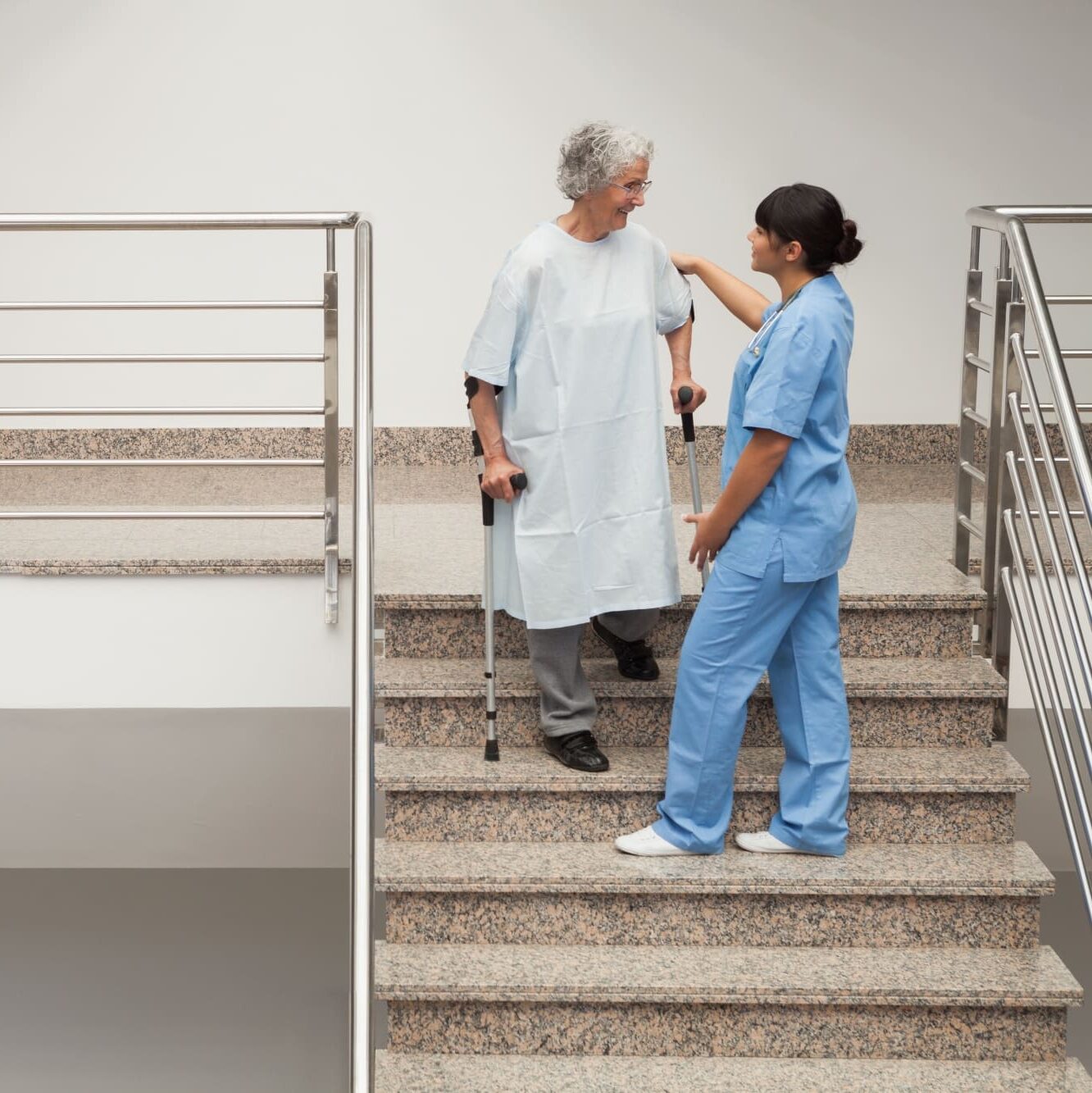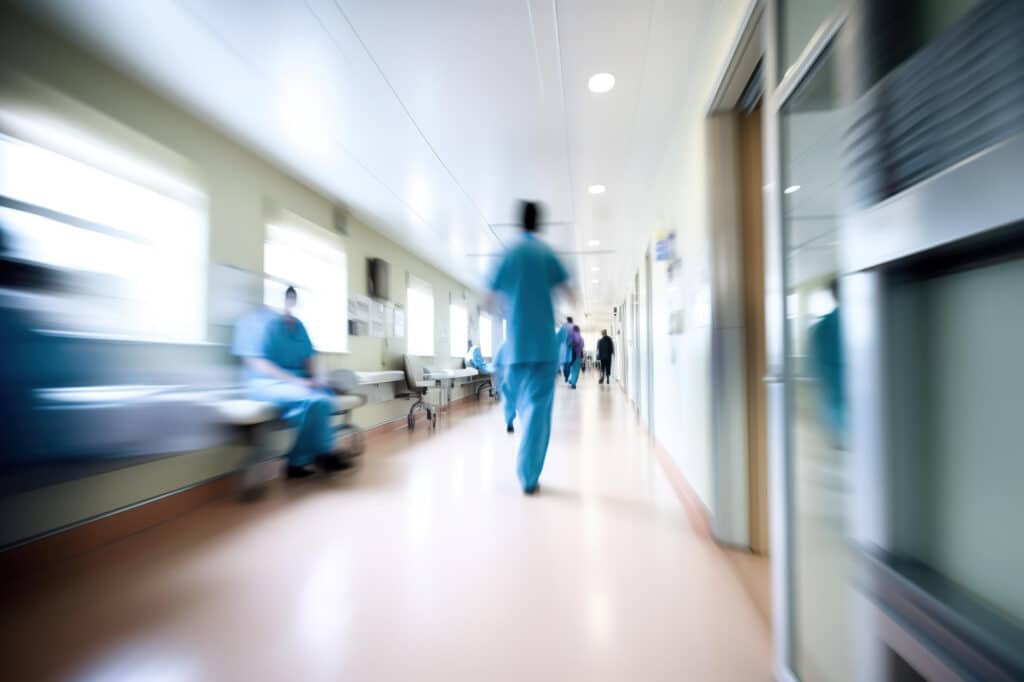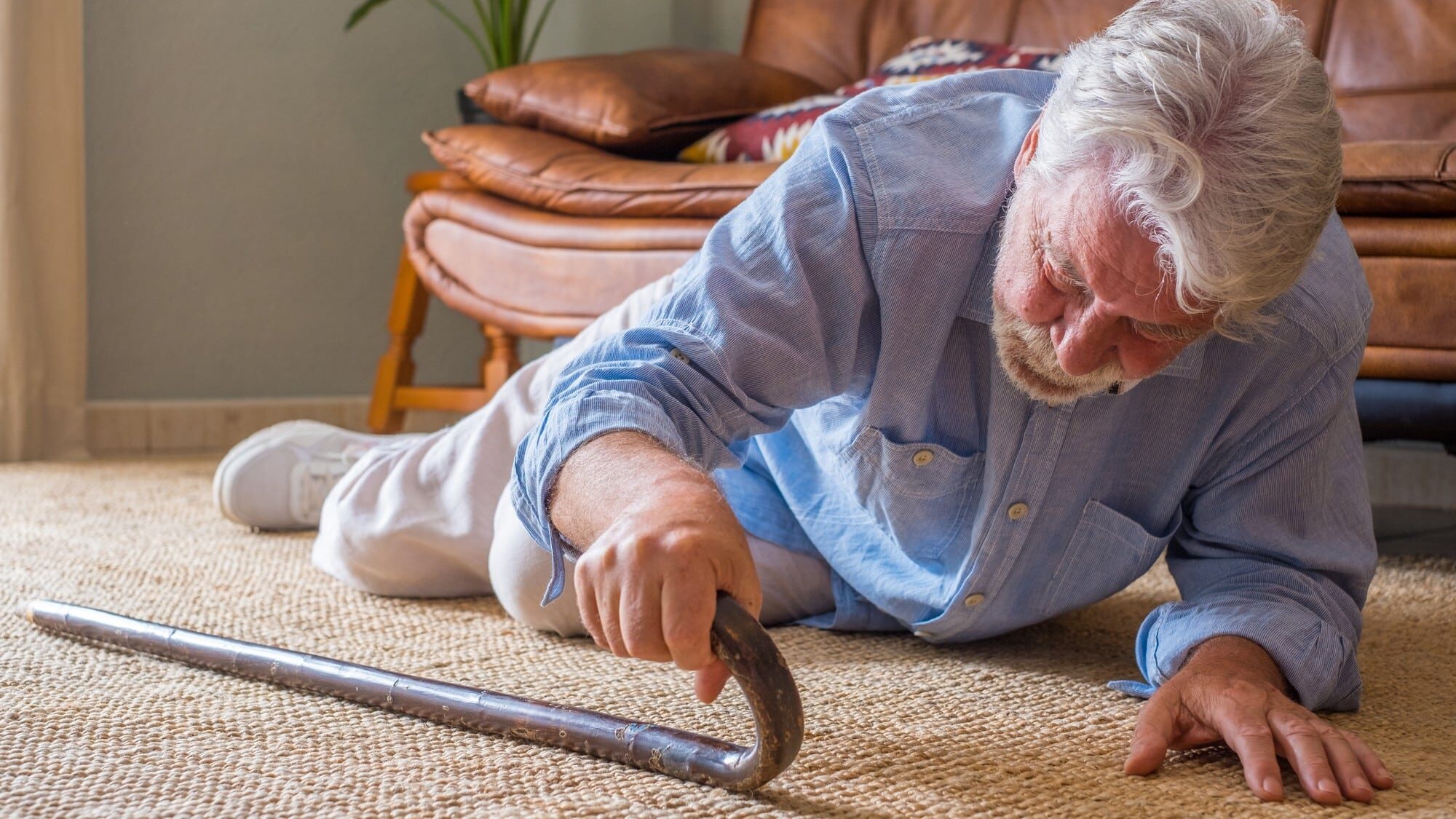Preventing falls in hospital
Fall prevention with Predicting Health
Fall as a risk factor
The risk of falling increases with age. Around a third of all people over 65 fall at least once a year and this can lead to serious injuries.
But falls in particular are preventable if patients at risk are identified and preventive measures are taken in good time. Assessing the risk of falls is therefore an essential part of fall prevention, especially for patients in hospital but also in care facilities.


As a fall can have serious consequences for those affected, it is important to prevent this event as far as possible.
Fall | the problem
Especially in hospitals falls may occur during inpatient stays due to the unfamiliar surroundings, long periods of bed rest, additional medication, etc.
It is also important in the private sphere to show those affected and their relatives ways of preventing falls in good time.
The human body changes with age. The ability to concentrate and eyesight tend to decline, muscle mass decreases, the sense of balance weakens and the bones become porous.
In short, the risk of falling increases, as does the risk of long-term complications, as the healing process often slows down in older people.
Complicated fractures (e.g. femoral neck) or open, slow-healing wounds lead to lengthy medical follow-up treatment and thus to follow-up costs.
It is not uncommon for a fall to be an incisive event in a person’s life and for those affected to never be able to fully return to their normal life.

Because of the serious consequences, it is important to prevent a fall in the best possible way.
Reduce the risk of falling
There are a variety of options and measures that can effectively and relatively easily reduce the risk of falling. In addition to coordinated medication by the doctor, these are also measures that can be implemented by the nursing staff and/or relatives.



The risk of falling must be recognized at an early stage
Determining a patient’s risk of falling is the basis for suitable prophylaxis.
This can be determined with various tests (e.g. Tinetti test or Morse Fall Scale), but these lead to additional (documentation) effort and there is a risk that they will not be carried out across the board.
The solution | Our PRT – Lintel module
In order to be able to carry out comprehensive screening, we have developed algorithms that can detect the risk of falls fully automatically in both nursing homes and hospitals without additional data input.
Our falls module achieved excellent performance on adjusted and independent test data, correctly identifying over 80 percent of patients at risk (AUROC: 0.948).
Revolutionize patient care in your hospital with Predicting Health.
Contact us today to find out more about our customized solutions.


